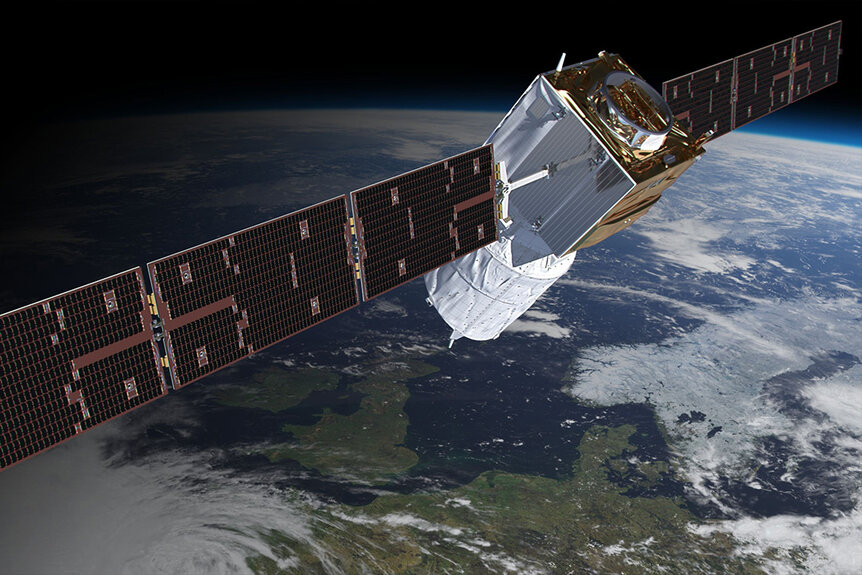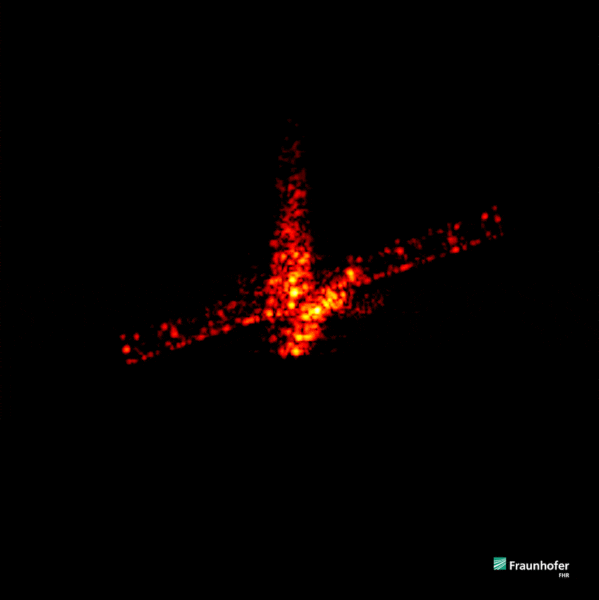Create a free profile to get unlimited access to exclusive videos, sweepstakes, and more!
Watch the Final Moments of a Dead Satellite As It Tumbles Through the Atmosphere
And just like that, the ESA’s Aeolus Satellite was gone.

Between the launch of Sputnik in 1957 and today, humanity has collectively dropped tens of thousands of pieces of litter in low-Earth orbit. Some of it is large enough to keep an eye on, but most of it is too small to see. Worse, as space junk whips around the planet at more than 17,000 miles per hour, it inevitably smashes into other bits of junk, shattering into smaller but more numerous bits.
When space exploration began, there wasn’t a lot of thought given to the ultimate fate of abandoned spacecraft, but now it’s a problem, and a growing one. The United States Space Force has been tasked with keeping the orbital peace — see behind the scenes in Battlefield Space, streaming now on Peacock — and until we cook up dogfighting spaceships and proton torpedoes, that largely means keeping an eye on unintended threats like fast-moving space junk. Of course, Space Force isn’t the only name in the game, and space agencies like the ESA are developing better methods for cleaning up their own junk.
The ESA’s Aeolus Satellite Sets the Standard for Responsible Reentry
The Aeolus satellite was in orbit for nearly five years, studying Earth's weather patterns from on high, before its mission concluded. From the moment they wrapped orbital operations, a countdown clock started ticking toward the moment Aeolus had to come down.
RELATED: A Real Life Tractor Beam for Cleaning Up Space Junk
Physics would have eventually taken care of Aeolus one way or another, but international space debris mitigation guidelines require that satellites spend no more than 25 years in orbit once their mission is complete. They also require that reentry of a satellite does not pose any undue risk to people or property. That means space agencies and private companies need to have a plan for deorbiting safely, and on a reasonable timeline.
In the case of Aeolus, mission control allowed the orbit to degrade naturally, but reserved enough fuel to complete final maneuvers and push Aeolus into the safest possible reentry corridor. They aimed the satellite over the Atlantic on a north-south trajectory. The plan was for Aeolus to burn up completely, but this reentry path minimized the risk of impact by any tiny bits that happened to survive.
This first-of-its-kind assisted reentry reduced the amount of time the satellite was uncontrolled from a few weeks to a few hours and allowed ground control to steer the satellite until very close to the moment of death.
The reentry path for Aeolus also put it right over top of the Tracking and Imaging Radar (TIRA) at Fraunhofer FHR, in Germany. Astronomers used the facility’s 34-meter radio antenna to image the dead satellite for four minutes right near the end. They captured eight images in total, which were then put together into the above animation, which shows the satellite tumbling through the atmosphere on descent.
The satellite crumbled to pieces roughly two hours later, at which point it became a temporary fireball arcing across the sky. The visible blaze lasted roughly two minutes, and then it was gone. By all accounts, the assisted reentry was a complete success and sets a new bar for responsible spacecraft end-life planning.
Catch Battlefield Space, streaming now on Peacock!
















